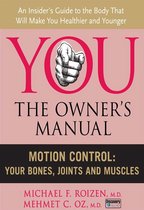Motion Control Ebook Tooltip Ebooks kunnen worden gelezen op uw computer en op daarvoor geschikte e-readers. Multi-Faceted Movement in Space, Time and Neurological Impairment
Afbeeldingen
Artikel vergelijken
- Engels
- E-book
- 9789811269592
- 08 mei 2023
- Adobe ePub
Productbeschrijving
This book addresses the mathematical and the practical aspects of motion implied by advanced control theory. The richness and power of the theory are demonstrated by separate analyses of single-model and multi-modal repertoires, consisting of verities of estimation and control facets. Starting with purely mathematical concepts, specifically, abstract probability and information theories, model control theory is gradually revealed as a rather amazing domain. The mathematical equations, taking essentially simple forms, are exposed as powerful generators of motion. Moreover, seemingly obvious applications of the theory, such as high-performance aircraft control make room for unexpected virtual reality feedback in control of motion for the neurologically impaired.
Following the presentation of some historical milestones and mathematical preliminaries, the book is divided into four parts. The first deals with minimal-order models of state estimation and control. The second addresses multi-modal estimation and control, which facilitates the operation of high-performance aircraft in large flight envelopes. The third presents the transition from naturally nonlinear control of movement in obstacle avoidance and object targeting to virtually linear control of movement in the neurologically impaired. The fourth and final part of the book addresses the application of virtual sensory feedback in walking with specific neurological impairment. While the clinical studies reported were all based on a single-model paradigm, a later reflection reveals that, given the variety of neurological symptoms associated with the relevant disorders, a multi-modal approach, as that addressed in the control of high-performance aircraft in a large flight envelope, would be similarly applicable in the treatment of neurological disorders.
Contents:
-
Introduction
-
Some Mathematical Preliminaries
-
Sensory Feedback Control: Optimal State-Space Design and Analysis:
- Minimal-Order State Estimation of Feedback Linear Systems
- Estimability and Regulability of Linear Systems
- Minimal-Order Linear State Estimation Under Performance Constraints
- Minimal-Order Model Identification
- Minimal-Order Predictability of Future States
-
Multi-Modal Linear Control Systems:
- Distance Measures for Stochastic Models
- Convergence on Finite Parameter Sets
- Linear Model Selection from a Finite Set
- Single and Multiple Stochastic Model Refuction
- Multi-Modal Aircraft Information-Guided Movement
-
From Natural to Virtual Model Selection in Biological Motion Control:
- Naturally Nonlinear Biological Motion Control
- Virtually Linear Biological Motion Control
-
Gait Entrainment by Sensory Feedback in the Neurologically Impaired:
- Walking on Virtual Tiles with Parkinson's Disease
- Auditory Feedback for Gait Improvement in Parkinson's Disease
- At-Home Audio-Visual Training by Parkinson's Patients
- Virtual Reality Cues for Improvement of Gait in Patients with Multiple Sclerosis
- Auditory Feedback Control for Improvement of Gait in Patients with Multiple Sclerosis
- The Gait-Entrainment Edge of Glide-Symmetric Virtual Visual Feedback
- Gait Improvement in Patients with Cerebral Palsy by Visual and Auditory Feedback
- A Brief Study of Virtual Reality Feedback for Gait Improvement in Patients with Idiopathic Senile Gait Disorders and Patients after Stroke
Readership: Graduate students and professors of control theory, applied mathematics, electrical engineering, aeronautical engineering, mechanical engineering, medicine, computer science, physics, biology, neurology, psychology, cognition, linguistics, zoology, neurologists, doctors, physical therapists, neuroscientists, mathematicians, physicists, computer scientists. Biologists, psychologists, linguists, zoologists.
Key Features:
- The focus of the book, presented and explained here for the first time, is that the technological wisdom of control theory is naturally embedded in cortical control of biological motion
- The notion of a single-model selection from a multi-modal set addressed in Chapters 9–12, was first suggested in the author's PhD thesis (Baram, 1976), but its extension to virtually driven motion control in neurologically impaired patients is suggested here for the first time
- The mathematical evolution from the fundamentals of probability, statistics, and information to the technology of virtual reality, supported by extensive clinical tests, is also presented here for the first time
Productspecificaties
Inhoud
- Taal
- en
- Bindwijze
- E-book
- Oorspronkelijke releasedatum
- 08 mei 2023
- Ebook Formaat
- Adobe ePub
Betrokkenen
- Hoofdauteur
- Yoram Baram
- Hoofduitgeverij
- WSPC
Lees mogelijkheden
- Lees dit ebook op
- Desktop (Mac en Windows) | Kobo e-reader | Android (smartphone en tablet) | iOS (smartphone en tablet) | Windows (smartphone en tablet)
Overige kenmerken
- Studieboek
- Nee
EAN
- EAN
- 9789811269592
Je vindt dit artikel in
- Categorieën
-
Kies gewenste uitvoering
Prijsinformatie en bestellen
De prijs van dit product is 91 euro.- E-book is direct beschikbaar na aankoop
- E-books lezen is voordelig
- Dag en nacht klantenservice
- Veilig betalen
Rapporteer dit artikel
Je wilt melding doen van illegale inhoud over dit artikel:
- Ik wil melding doen als klant
- Ik wil melding doen als autoriteit of trusted flagger
- Ik wil melding doen als partner
- Ik wil melding doen als merkhouder
Geen klant, autoriteit, trusted flagger, merkhouder of partner? Gebruik dan onderstaande link om melding te doen.








